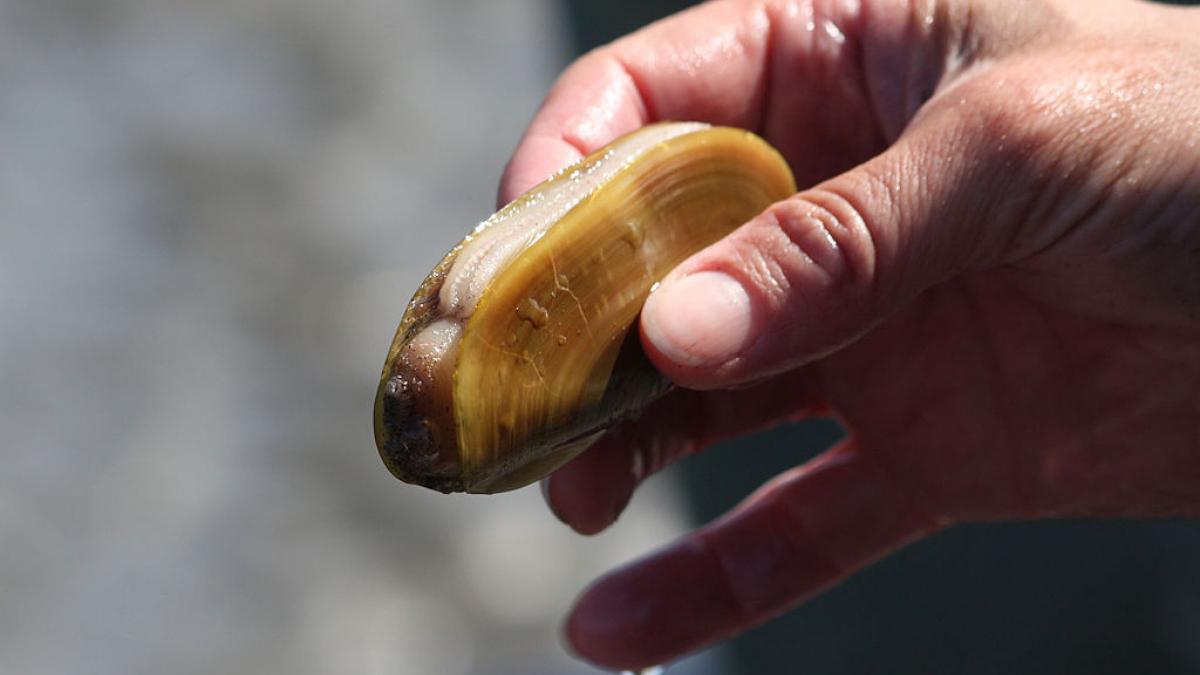
Regular consumption of shellfish contaminated by a common marine toxin can cause molecular changes in the brain, even at levels below regulatory limits
MEDIA CONTACT: ehcomms@uw.edu
(Seattle) September 14, 2022 — Chronic exposure to domoic acid—a marine toxin found in shellfish—can lead to subtle changes in the brain, even at low levels that are considered safe under current regulatory guidelines, according to new research led by the University of Washington and partners.
The toxin is produced by certain algal blooms in oceans around the world and can accumulate in shellfish, including crab, clams and mussels, as well as anchovies and rockfish. With high levels of exposure, domoic acid can cause amnesic shellfish poisoning and permanent short-term memory loss in people who consume contaminated seafood.
The new study, published today in the journal Environmental Health Perspectives, is the longest study to date of neurotoxicity from prolonged, low-level exposure to the toxin.
“The results raised concern that current regulatory guidelines for safe levels of domoic acid consumption are not adequate to protect frequent consumers of shellfish who may rely on these food sources,” said lead author Rebekah Petroff.
Petroff completed the research as part of her PhD in Environmental Toxicology at the University of Washington Department of Environmental & Occupational Health Sciences. She is now a postdoctoral fellow at the University of Michigan Department of Environmental Health Sciences.
Populations at potential risk include members of coastal Native American communities and subsistence shellfish harvesters who may have repeated, long-term exposure to the toxin. The research may also have implications for sensitive populations, including pregnant people, infants and children, and people with other health conditions.
Researchers studied adult female macaque monkeys—primates with similar brain structure and chemistry to humans—who were exposed daily to low levels of domoic acid over 14 months. Exposure levels were chosen to resemble the maximum allowable regulatory limit as well as lower levels based on the consumption of contaminated Washington razor clams.
The first signs of mild tremors were evident in a few of the macaques within as little as two months of exposure. Magnetic resonance imaging was used to examine the potential brain site involved in the tremors, and researchers also looked for changes in markers of gene expression.
The team found subtle brain alterations in the hippocampus, a region associated with learning and memory, and the thalamus, a region associated with processing of sensory information. Petroff said the patterns of change they observed reflected a shift in the brain’s ability to protect itself against long-term exposure to domoic acid.
That shift in protective capability may compromise the brain’s ability to defend itself against other kinds of environmental exposures and raises concerns about long-term health effects, she said.
Regulatory agencies responsible for coastal regions of the US and Canada are good at monitoring algal blooms and quick to shut down shellfish harvesting when it occurs, Petroff noted. For casual shellfish lovers, it is safe to assume crab, clams or other shellfish available at grocery stores and restaurants were harvested safely.
“If you are eating those, they should be safe, and I would eat them alongside you, once in a while,” Petroff said.
But Petroff hopes the new study will spur regulators and people who regularly harvest and eat shellfish to come together and consider the health risks, as well as the cultural and economic implications of updating regulatory guidelines.
“It is essential to include affected coastal Native American Nations and Indigenous peoples in determining policy and regulatory efforts related to shellfish consumption, as well as monitoring any associated health effects,” she said.
Study co-authors include: James MacDonald, Theo Bammler, Brenda Crouthamel, Noelle McKain, Kimberly Grant and Thomas Burbacher of the UW Department of Environmental & Occupational Health Sciences, the Washington National Primate Research Center, and the UW Center on Human Development and Disability; Christopher Williams and G. Jean Harry, Mechanistic Toxicology Branch, Division of Translational Toxicology, National Institute of Environmental Health Sciences (NIEHS); Jian-Liang Li, Epigenetics and Stem Cell Biology Laboratory, NIEHS; Todd Richards, UW Department of Radiology; Christopher English and Audrey Baldessari of the Washington National Primate Research Center; and Sara Shum, Jing Jing and Nina Isoherranen of the UW Department of Pharmaceutics.
Other collaborators include: Steve Ellis, Tim Wilbur, Washington National Primate Center staff, UW Diagnostics Imaging Science Center staff and the NIEHS Histology Core.
The research was funded by NIEHS, the Eunice Kennedy Shriver National Institute of Child Health and Human Development, the National Institutes of Health and the National Center for Advancing Translational Sciences.
For more information, contact researchers Tom Burbacher or Rebekah Petroff.